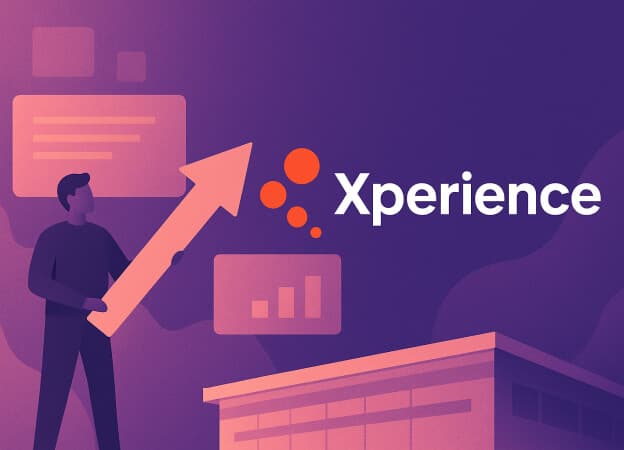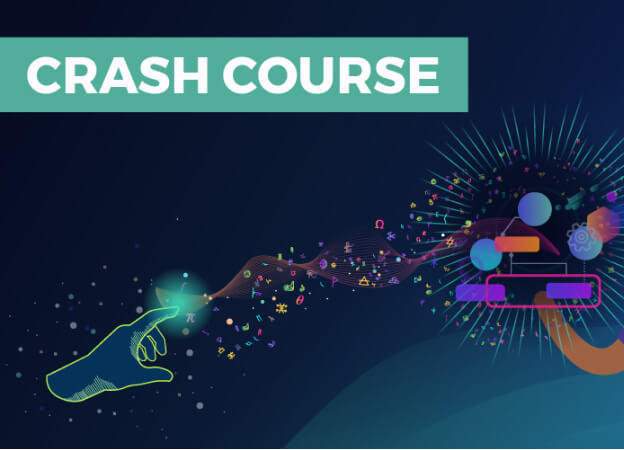In part one of this series, Barb Mosher Zinck and Cruce Saunders sat down to reflect on the state of content and the strategies organizations can employ to navigate an increasingly complex content landscape. In this final installment, Cruce and Barb discuss the future of the CMS market and the impact a holistic content strategy has on ROI.
This article was originally published as "The Future of Content Strategy, Technology & ROI" via Ingeniux in October 2018.
The Present and Future of the CMS Market
You can't blame anyone for being confused about the CMS market today. There are web content management systems, headless content management systems, web experience management, customer experience management, digital experience management, and everything in between. Where is the market headed?
The first thing Saunders said is that it's important to understand that headless is not a product strategy or even an implementation strategy. Headless is an integration and publishing strategy. He said that pure headless has its place, but installed and integrated CMS platforms are not disappearing any time soon (at least not with enterprise publishers). Most organizations have too many integration and orchestration issues to address.
Instead, we should look at headless as a function of an overall publishing infrastructure — an output approach for front-end content for a stateless environment. But, "if I need a stateful relationship in real-time with the head (with customer interactions), one that is a sub-40 millisecond integration with contextual data in my data warehouse, I need an integration tie back that is low-latency. I will need a hybrid solution — a combination of stateless content and stateful interaction management. I believe that vendors pursuing hybrid approaches have it right for the enterprise."
Saunders said that headless is a perfect strategy as a standalone for certain low-dependency interactions with customers. In this case, it does not require much dynamic assembly that includes contextual data from embedded systems. It can also be distributed via content delivery networks.
But for most enterprises, Saunders said, it's a "both-and" situation. Both integrated, installed, stateful presence and management of content, connected with stateless distributed content delivery opportunities via an API.
One CMS to Rule Them All — Not So Much
Can an organization do everything it needs with one CMS platform? Saunders said he hasn't seen an environment where one system of record does everything. He acknowledged that an organization should consolidate as much as possible, and he pointed out that a solution like Ingeniux, which provides the ability to store, manage, and publish modular content that also can be exposed via a services layer and allows for the combination of customer context data with content sets, can provide a good cornerstone for customer experience.
But, the reality is, organizations are building an entirely new ecosystem for content technology in the enterprise. In this new ecosystem, there is a combination of technologies that when brought together enable all the different customer/author experience interactions necessary to keep up with all the different content types. Specifically, Saunders mentioned systems like ECM, DAM, content services platforms, and CCMS.
Ingeniux, Cruce said, is unique in that it has DNA from both CCM and WCM, and that as a CMS, it's covering more bases than most, especially with its XML-native mentality and architecture.
However, organizations must connect all those things with Martech applications and other third party enterprise apps.
"Ultimately, Saunders sees the CMS market heading towards content ecosystems that enable the transit of content, schemas, and semantics between systems of record so that content can play well with others."
In this view, "no one system owns the content; the enterprise owns the content, and the systems of record can provide unique value in the management, enrichment, workflows, user experience, and publishing infrastructure around the content. Platform vendors need to start stitching together ways to enable this.
"The content itself needs to be portable among participants in the ecosystem. Most vendors have been averse to this traditionally, and those that don't change will lose in the long run. "Enterprises are waking up to the fact that their content assets need to be owned by the company, not locked in any given system, and must be able to move between systems without requiring a manual copy and paste."
How New Technology Is Affecting Content Strategy
Curious to understand how new technology like chatbots and other conversational UIs are impacting content strategy? Saunders said it's a huge impact on the generation of content sets. But the primary driver is personalization at scale.
Organizations, he said, need to take another look at how content gets authored for conversational interactions, and that means we have to look outside the page metaphor. "If we aren't delivering an article on a page, what are the different exemplars of what that experience is going to be?"
Consider these two examples that Saunders provided: A spoken statement delivered to Alexa and steps on a watch that link to a longer-form structured content to address symptoms spoken into a watch. The same knowledge used in many new ways."
Just using a WYSIWYG text block robs customers and the wide world of some of the utility that is latently possible inside that article. But if I put it into structure from the beginning, capture the conversational variant and contextual triggers as tags or semantic indicators while the author is building the creative brief or the asset itself, then I have to think about content differently. Not as a page or a single rendering but as an asset that has multiple expressions in different customer experiences. The way we craft that knowledge needs to be unique from a page-based authoring process."
Determining the ROI of Your Content
Content takes work, so we all want to know our content is working. But how do you determine ROI on content strategy? Saunders said we need to look at content as a P&L at the asset level. It has a cost to create and deploy and it has value. The problem is analytics is at the page level and, Saunders says, that's not enough. Page analytics are fine, but we need to know how an asset performed wherever it expressed itself. When we can figure that out, then we can understand the efficiency and effectiveness of the return on that asset.
The cost side of content production must be quantified, too. Saunders provided the example of the Mayo Clinic. Highly paid subject matter leaders for health content were spending 40-60% of their time transforming content. Creating XML pipelines for those authors to get content from authoring into a management system will save the company 50% or more of human capital costs. Another company looked at the amount they were spending to convert a single content type to a number of variants and scenarios and found that across the different publishing groups they were spending over one million dollars a year on that one content type."
"Organizations do not calculate the real cost of the copy-paste nightmare and once they do, it's overwhelming and obvious what needs to be done."
How [A] Works with Organizations
The approach has changed over the years. [A] used to come in as a specialized consultant for tactical projects: "We are implementing a new CMS, and we want to do configuration planning for it."
Today, Saunders said, organizations see their content and publishing operations as an unmanageable, overwhelming mess, and they want help fixing it. Silos of content, many systems of record, no standardized metadata (or if there is, it's poorly done), missing content assets, content authored in Word and emailed around for review and then sent to a group to get pasted into the CMS. Too many versions, no control. A complete quality control nightmare.
What does [A] do? They bring in a team of '[A]gents' to understand the nature and dimensions of the current state of the publishing operation. They examine it from a systemic mindset — people, process, technology. They build a map of how content actually flows inside the organization and get a feel for the state of various schemas and taxonomies that might exist. They align standards around structure and tagging. Saunders said they have never run into a company that didn't have some form of existing structure and semantics, the problem is ad-hoc versions are happening everywhere and none of it relates. The [A] team's job is to orchestrate a discussion around the problem and define the ideal future.
Most of the time, problems are not solved by simply buying another tool.
"The people around the content that author, structure, enrich, move, and manage, that enable that content to be effective, need attention and love and energy. Fixing publishing processes should not be a side project on someone's plate while they are trying to deliver more content than ever before. 100% of our clients come to [A] using outdated processes, organizational structures, and technology."
Saunders said there is a willingness of middle management to change, but without senior executive sponsorship, a cross-functional initiative won't work. It's critical to create a strategy that triggers change, helping departments take those first steps toward content intelligence. And the more senior leadership is involved, the faster it goes.
You can learn more from Cruce Saunders by following him on Twitter and reading some great resources on content strategy, content engineering, and content intelligence on the [A] website, simplea.com.
Next Steps:
-
Determine what content management platform is right for your organization with the [A] Guide to CMS Platform Selection.
-
Learn more about determining content ROI with the [A] Guide to Content Valuation.



